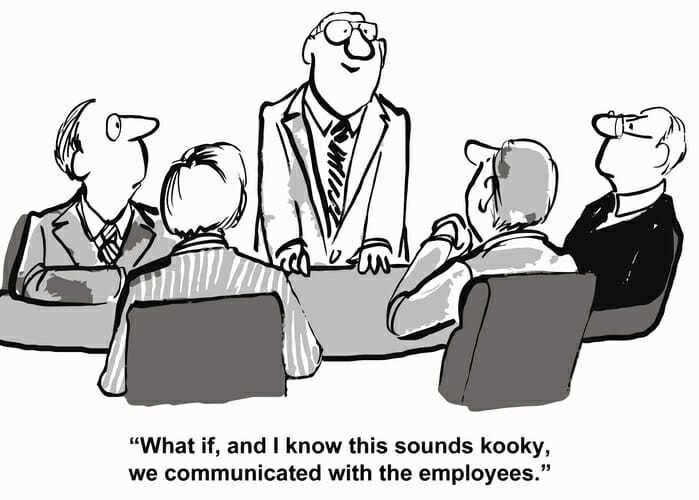The benefit plan you offer employees is a crucial addition to your employee compensation package. For most businesses, it is a necessary offering for attracting and retaining employees.
But a great benefits plan is only great if your employees understand it, know how to effectively use it and appreciate its value. If employees feel confused or overwhelmed because they don’t understand the healthcare and related industry terminology, for example, they will overlook benefits available to them and lose an appreciation of the value it offers.
Developing an effective year-round benefits communications strategy helps ensure that employees understand their options and have the information they need to make educated choices. This in turn means employees develop a deeper appreciation for the plan and remain accountable to it, keeping your costs under control.
4 steps to an effective benefits communication strategy
Conduct an annual ‘state of the union’
An annual check in with employees is paramount to creating transparency within your benefits plan program. Costs rarely ever stay the same — when claims rise, overall plan costs may rise; when claims fall, overall plan costs may fall. Writing an annual memo that outlines these costs clearly states in black and white the reasons for current costs and helps employees make a clear connection between their usage of the benefits plan to the overall cost of the plan.
It’s also essential to include the percentage share of costs between employer and employee in this memo. It becomes a powerful reminder as to how much the employer is investing in the health and wellness of its employees.
It’s important to remember that in order to be effective, a state of the union report must be written every year regardless of whether costs are changing. Doing so helps deepen employee understanding of the progression of plan costs.
Lead live sessions
Too often, the only time employees have the opportunity to learn about their health and wellness benefits is during their initial onboarding sessions. While benefit plan education is an important part of that process, it shouldn’t be the only opportunity to learn about the plan.
Hold regular live sessions (or better yet, ask your benefits advisor to lead them for you) to explain different aspects of the plan and open the floor to questions. This takes some of the mystery out of the plan and creates a deeper appreciation for it. It’s also a good time to educate employees on the importance of making smart consumer choices instead of choices based on the total amount that can be claimed through the plan.
Unless you have a large employee base or are in an industry with seasonal or transient employees, live sessions typically only need to be held annually.
Hold ‘office hours’
From time to time, ask your benefits advisor to be onsite and available to answer questions about the plan. Your broker has in-depth knowledge of the plan and is the best person to answer those (sometimes) tough questions from employees. It also gives employees an opportunity to book one-on-one appointments for deeper discussions or to raise concerns that they may feel uncomfortable doing in a group setting, such as the live sessions.
Ask employees for feedback
Create a survey that asks for feedback and input on the benefits plan to keep your finger on the pulse of employee satisfaction. In this survey, ask employees to use a scale to rate their satisfaction with the plan and gain greater insight into the benefits they value most. This survey can also be used to gauge interest on benefit opt-ins or additional fee coverage. The data collected can then be used upon renewal to decide what, if any, changes need to be made to the benefits offered.
Successful benefits plan produces results
Executing an effective communications strategy not only educates employees and gauges satisfaction and appreciation, but it is also one of the only ways to measure the success of your plan.
Because only a successful benefits plan produces actual results for your employees and for your company.


